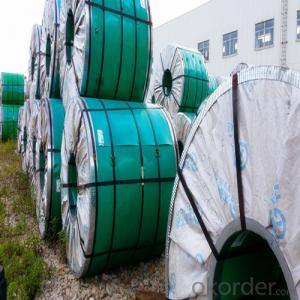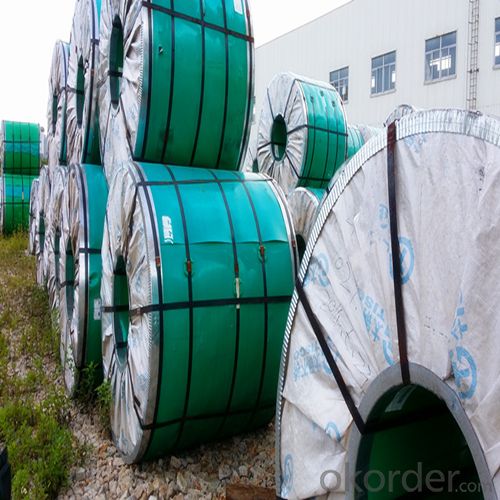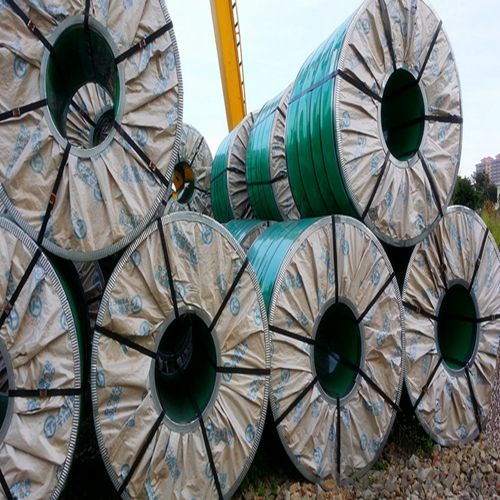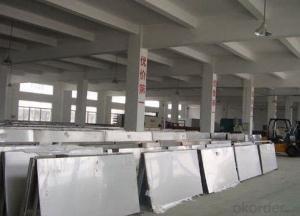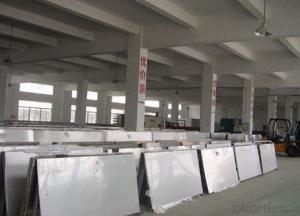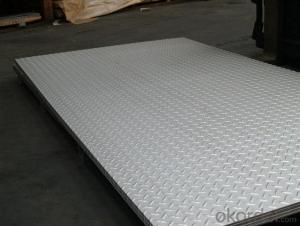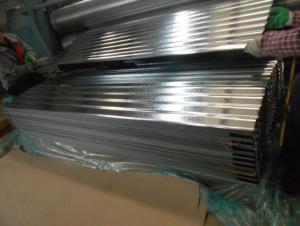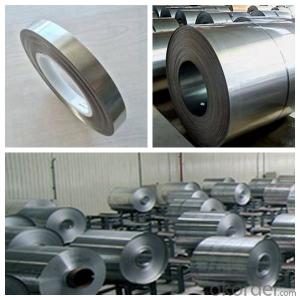Stainless Steel Welding Wire Sheet Tube Coil Plate
- Loading Port:
- Tianjin
- Payment Terms:
- TT OR LC
- Min Order Qty:
- 100 m.t.
- Supply Capability:
- 10000 m.t./month
OKorder Service Pledge
OKorder Financial Service
You Might Also Like
1.Structure of Stainless Steel Coil:
Stainless steel coil is a production which not easy rust, acid resistance and corrosion resistance, Stainless steel coil is a new kind of Austenite stainless steel by used Mn, N replace Ni. so it is widely used in light industry, heavy industry, daily necessities and the decoration industry. Stainless steel coil has good corrosion resistance and hot / cold processing performance, instead of stainless steel products for used in the not high of corrosive environment, such as indoor, inland city outdoor etc.
2.Main Features of the Stainless steel coil:
1) High Quality: Using Latest automated control equipment to ensure the quality
2) Best Price: With most automated equipments to ensure our price is lower than the market
3) Fast Delivery: The delivery date within 20 das after get your order
4) Best Service: Our after-sell service team will help you to slove all the problems about the order
3. 304 Stainless steel coil Images
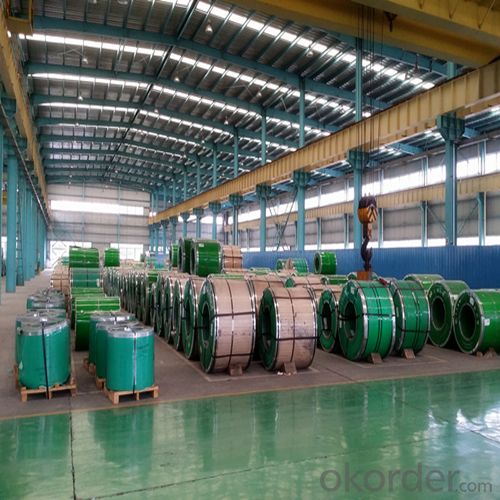
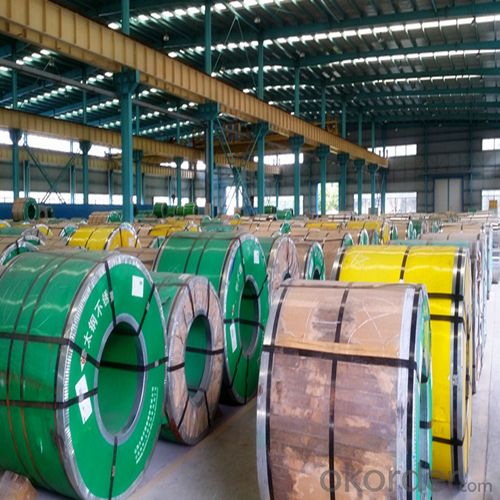
4. 304 Stainless steel coil Specification
Product name: 304 Stainless Steel Coil
Thickness: 0.2mm to 1.5mm
Technical: Cold Rolled
Width: 10mm to 1240mm
Type: 200 Series
Length: As customer's requested
Standard: JIS, SUS
Finish: BA, 2B, 8K, NO.3, NO.4, HL
MOQ: 100 MT
Ship Term: FOB Shenzhen port or CNF import port
Delivery Time: 15 to 20 day after the receive the deposit or LC
Packaging: By wooden pallet, wooden case or according to customer's request
5.FAQ
1) How about your company?
2) A world class manufacturer & supplier of castings forging in carbon steel and alloy steel,is one of the large-scale professional investment casting production bases in China,consisting of both casting foundry forging and machining factory. Annually more than 8000 tons Precision casting and forging parts are exported to markets in Europe,America and Japan. OEM casting and forging service available according to customer’s requirements.
3) How to guarantee the quality of the products?
4) We have established the international advanced quality management system,every link from raw material to final product we have strict quality test;We resolutely put an end to unqualified products flowing into the market. At the same time, we will provide necessary follow-up service assurance.
- Q: Can stainless steel sheets be used in outdoor environments?
- Yes, stainless steel sheets can be used in outdoor environments. Stainless steel is highly resistant to corrosion, making it a suitable choice for outdoor applications where exposure to moisture, humidity, and other environmental elements is likely.
- Q: Can stainless steel sheets be used in high-temperature applications?
- Indeed, high-temperature applications can utilize stainless steel sheets. Renowned for its superb heat resistance characteristics, stainless steel proves itself adaptable in environments boasting elevated temperatures. Notably, it boasts a formidable melting point, ensuring its durability and structural integrity endure even under extreme conditions. Furthermore, stainless steel showcases commendable oxidation resistance, thwarting scale formation and preserving its surface's sleekness. Consequently, stainless steel sheets rank favorably when considering their widespread employment in diverse high-temperature settings, encompassing heat exchangers, furnaces, boilers, and exhaust systems.
- Q: Can stainless steel sheets be used for exterior cladding?
- Indeed, exterior cladding can utilize stainless steel sheets. The robustness and resistance to corrosion of stainless steel make it appropriate for various purposes, including cladding. Stainless steel sheets present exceptional endurance against weathering, UV rays, and extreme temperatures, rendering them perfect for external usage. They can endure severe environmental conditions, such as heavy rain, snow, and strong winds, without deteriorating or losing their aesthetic charm. Moreover, stainless steel sheets are available in an extensive array of finishes, allowing for customization and design adaptability. Whether for residential, commercial, or industrial edifices, stainless steel cladding offers a durable and visually pleasing solution.
- Q: Can stainless steel sheets be used for restaurant equipment?
- Yes, stainless steel sheets can be used for restaurant equipment. Stainless steel is a popular choice for restaurant equipment due to its numerous benefits. It is durable, corrosion-resistant, and easy to clean. Stainless steel sheets can be fabricated into various shapes and sizes to meet the specific requirements of restaurant equipment, such as countertops, sinks, tables, shelves, and food preparation surfaces. Additionally, stainless steel is a hygienic material that does not react with food or contaminate it, making it ideal for use in restaurant settings where cleanliness and food safety are paramount.
- Q: How do you prevent staining on stainless steel sheets?
- To avoid staining stainless steel sheets, there are several actions you can take: 1. Regularly clean the sheets using mild soap or detergent and warm water. Harsh chemicals and abrasive cleaners should be avoided as they can harm the surface. 2. Keep the sheets away from corrosive substances such as bleach, ammonia, and acidic cleaners. If spills occur, quickly rinse the affected area with water and thoroughly dry it. 3. Apply a protective coating or film to create a barrier between the surface and potential staining agents. There are various products designed specifically for stainless steel that can be used, such as protective sprays or polishes. 4. Properly maintain the sheets by regularly inspecting for any damage, scratches, or rust. Address any issues promptly by cleaning or repairing the affected areas to prevent staining. 5. Use soft cloths or non-abrasive sponges when cleaning or maintaining the sheets to avoid scratching the surface. Avoid using steel wool or abrasive materials that can cause marks or damage. 6. Ensure the sheets are thoroughly dried after cleaning to prevent water spots or mineral deposits. Use a clean, lint-free cloth to remove any moisture. 7. Handle the sheets with care to prevent scratching or damaging the surface. Avoid dragging or sliding heavy objects across them, as this can leave marks or cause abrasions. By following these preventive measures, you can maintain the appearance and integrity of stainless steel sheets and minimize the risk of staining.
- Q: Can stainless steel sheets be used for escalator steps?
- Certainly, escalator steps can be made from stainless steel sheets. The reason stainless steel is highly favored for escalator steps is its exceptional durability, strength, and resistance to corrosion. It can endure the ceaseless foot traffic, hefty loads, and daily wear and tear that escalator steps face. Moreover, stainless steel possesses a sleek and contemporary look that contributes to the overall aesthetic charm of escalators. Consequently, stainless steel sheets emerge as a dependable and pragmatic option for escalator steps in a range of commercial and public environments.
- Q: What are the common grades of stainless steel sheets used in construction?
- The common grades of stainless steel sheets used in construction are typically classified as austenitic, ferritic, or duplex stainless steels. Austenitic stainless steels, such as 304 and 316, are the most widely used grades due to their excellent corrosion resistance and high strength. These grades are commonly used in architectural applications, roofing, cladding, and structural components. Ferritic stainless steels, like 430, are known for their good corrosion resistance and high toughness, making them suitable for applications where strength and durability are important. They are often used in decorative applications, interior design elements, and automotive trim. Duplex stainless steels, such as 2205, offer a combination of excellent corrosion resistance and high strength, making them ideal for heavy-duty applications in construction. These grades are commonly used in bridges, offshore structures, and industrial plants where superior strength and resistance to chloride-induced stress corrosion cracking are required. It's important to note that the selection of the grade of stainless steel sheet depends on the specific requirements of the construction project, such as the environment, load-bearing capacity, and aesthetic considerations. Consulting with a materials engineer or a stainless steel supplier can help determine the most suitable grade for a particular construction application.
- Q: Stainless steel wire drawing without fingerprints, what principle?
- Let's say the principle: the material surface is easy to leave the fingerprint because the material has the characteristics of specular reflection on the light. The material is smooth enough, and the light is not diffusely reflective on the material, mainly specular. Landlord with your finger press the glass mirror will know
- Q: Can stainless steel sheets be used for jewelry making?
- Yes, stainless steel sheets can be used for jewelry making. Stainless steel is a durable and hypoallergenic material that is often used in the production of jewelry. It offers a sleek and modern look and can be easily shaped and manipulated into various designs and forms for making earrings, necklaces, bracelets, and other jewelry pieces.
- Q: What is the tensile modulus of stainless steel sheets?
- The tensile modulus of stainless steel sheets typically ranges from 180 to 200 GPa (Gigapascals).
Send your message to us
Stainless Steel Welding Wire Sheet Tube Coil Plate
- Loading Port:
- Tianjin
- Payment Terms:
- TT OR LC
- Min Order Qty:
- 100 m.t.
- Supply Capability:
- 10000 m.t./month
OKorder Service Pledge
OKorder Financial Service
Similar products
Hot products
Hot Searches
Related keywords
